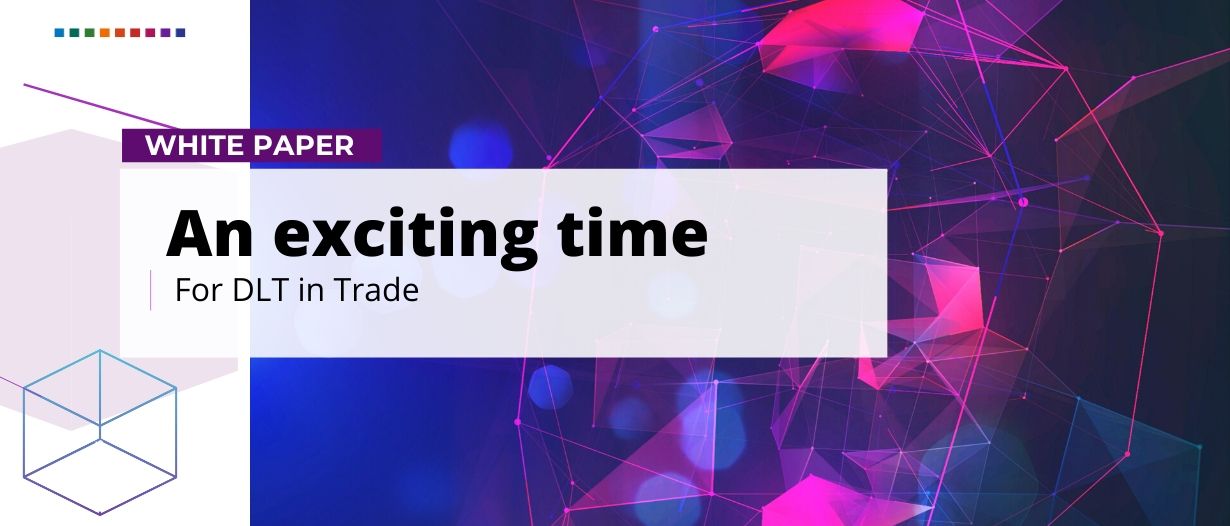Trade Finance Global has partnered with the World Trade Organization and the International Chamber of Commerce to conduct a quantitative and qualitative survey of DLT in the Trade industry
Looking forward it is clear to tell that this is an exciting time for DLT in the trade industry; a time ripe with opportunities. According to the industry experts, the greatest opportunities for DLT in the trade and shipping space lie with its cost savings through improved efficiencies, its function as a catalyst for change and innovation, and its ability to accelerate standardization.
Cost savings through improved efficiencies
Perhaps the most widely known and oft-cited opportunity for DLT in the trade and shipping space is its ability to streamline tedious processes, driving efficiency and slashing costs. When asked to list their top three benefits for DLT in the trade finance sector, 44 percent of respondents using or developing DLT indicated gains in speed and efficiency as being part of their top three, and 35 percent indicated cost reductions. These trail behind only transparency, with 55 percent, as the most indicated benefits. Transparency into the processes at play, however, will likely serve as a key driver of the efficiency gains that are to be experienced.
“It’s like building the new trade finance backbone for the world from scratch”
–Atul Khekade, Co-Founder and Ecosystem Development, TradeFinex Tech Ltd.
The paper-plagued processes that were necessary in the past to instill a pseudonymous sense of trust amongst counterparts seem set to become laughably obsolete. The immutable and distributed nature of DLT instills that same trust through a direct, digital, and transparent environment. Real-time, trusted data flows, enabled through a combination of cryptography and digital signature technology, have been touted by many experts as facilitators for automated and simplified practices such as KYC, AML, and risk assessments. The cost savings for this digitization is twofold: automating the current labour-intensive processes and reducing risk by making illegal practices such as Trade-Based Money Laundering (TBML) increasingly more difficult to pursue. In general, expert views support those held by the mainstream media that DLT presents a tremendous opportunity to cut costs and improve efficiency in the trade and shipping space.

DLT as a catalyst for change and innovation
While its freestanding potential benefits seem clear, independent DLT applications are not in and of themselves a full solution. Rather, DLT serves as an enabler with benefits that must be viewed as part of a bigger picture. DLT has come into prominence amidst a wave of other technological advancements, like Internet of Things (IoT) and artificial intelligence (AI). Some experts argue that it is not necessarily DLT on its own that will create the biggest waves in the industry, but might be these other technologies instead. DLT, however, is accelerating the industry’s push for trade digitization and providing a perceivably secure means of deploying supporting digital innovations, which will facilitate a means of accessing these transformational technologies. In other words, DLT is the spark necessary to ignite the technological engine that could power radical change throughout the trade industry. Perhaps even more important than its function as a catalyst for digital change and innovation, is DLT’s ability to function as a catalyst for accelerating standardization efforts across the industry.
“The combination of DLT with other maturing technologies will allow entirely new, unprecedented products in trade finance”
-Hans J. Huber, Trade Finance Innovation Project Manager, ICC DSI
Accelerated standardization

One of the most profound opportunities that DLT holds is its ability to accelerate the standardization work that has been needed in the trade industry for many years. It is a commonly cited fact that the value of a DLT network is directly driven by the number of actors participating in that network. Based on this potential value derived from necessary collaboration, firms are becoming incentivised to join forces and work together. A prerequisite to experiencing these synergistic gains is the development of a common set of standards relating, not only to the technology being used, but also to key areas such as data models, semantics, and processes. Absent the gentle nudge of DLT-induced cooperative game theory payoff, efforts towards this standardization would be accelerating at a much slower pace, if at all. Aligning the industry along these common dimensions will be a fundamental efficiency driver and lead to increased cost savings. In short, DLT adds the external pressure necessary to encourage collaboration, which must be preceded by standardization and will be followed by widespread cost savings.
“We are of the view that blockchain could potentially be the technological bridge in the fragmented environment of international trade.”
-NTP Singapore
























